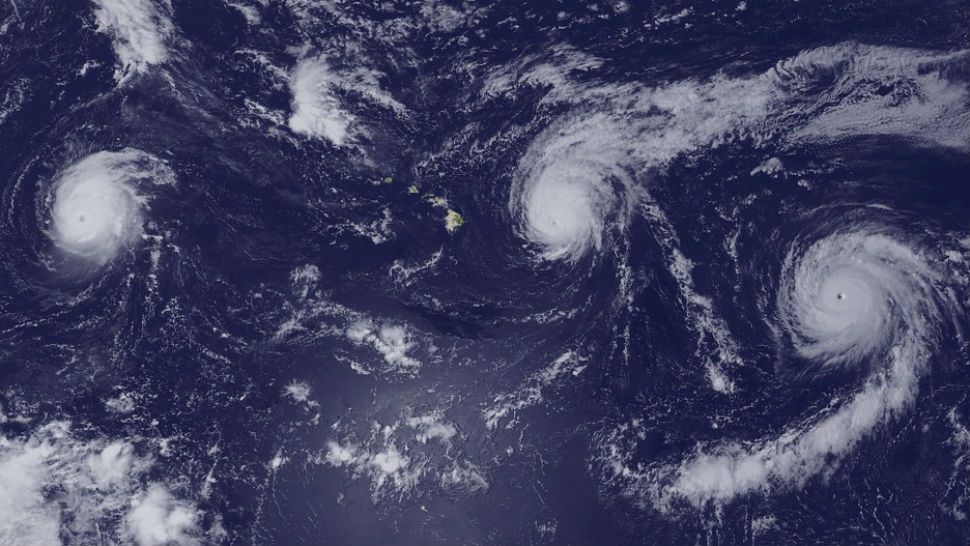When two hurricanes come together, sometimes, they can spin around a common point.
Here’s how the Fujiwhara effect works.
You may have seen this rare interaction between two storms. In case you haven’t, in early 2019, two storms off the South American coastline spun around a common midpoint and creating this stunning visual:
So why does this happen? In short, the two-low pressure systems gravitate toward one another, like water circling down into a bath drain.
This also tends to be more common among extratropical systems, or storms that develop due to temperature differences and upper-level winds.
But, the Fujiwhara effect can – and has – taken place between hurricanes and typhoons.
The smaller or weaker storm will usually circle around the bigger one, as the larger storm will eventually dominate or potentially even fully absorb the smaller system.
If you’re worried about the two hurricanes converging and creating a mega-storm, fear not. The effect usually leads to both storms weakening. Wind shear, or the change in wind speed in direction with height, usually is created from the interaction, killing one or both storms.
The effect will also usually take place in the Pacific Ocean, simply because there’s more open water for storms to converge over.
The effect, by the way, is named after Sakuhei Fujiwhara, a Japanese meteorologist who first discovered the interaction in the early 1920s.



